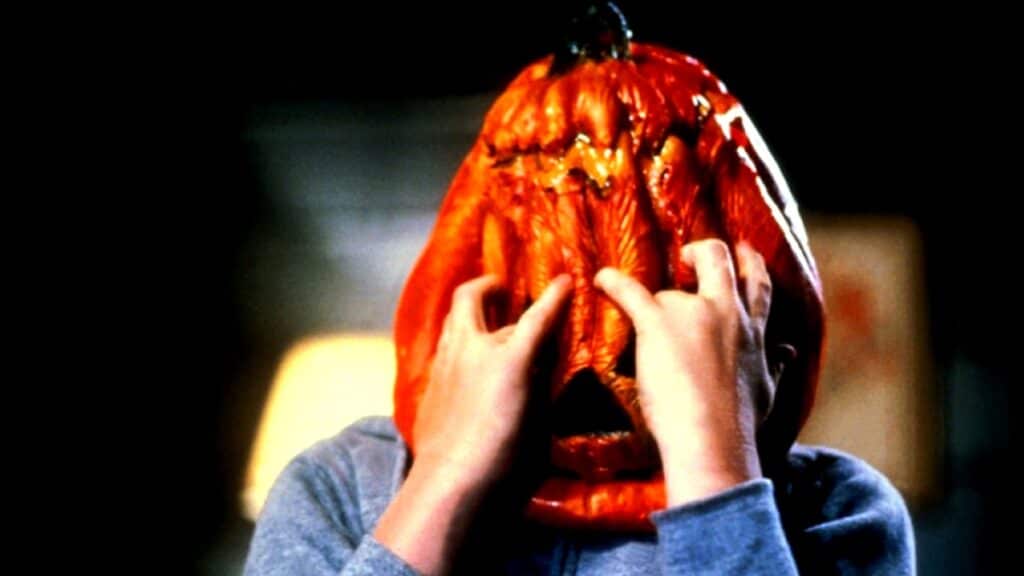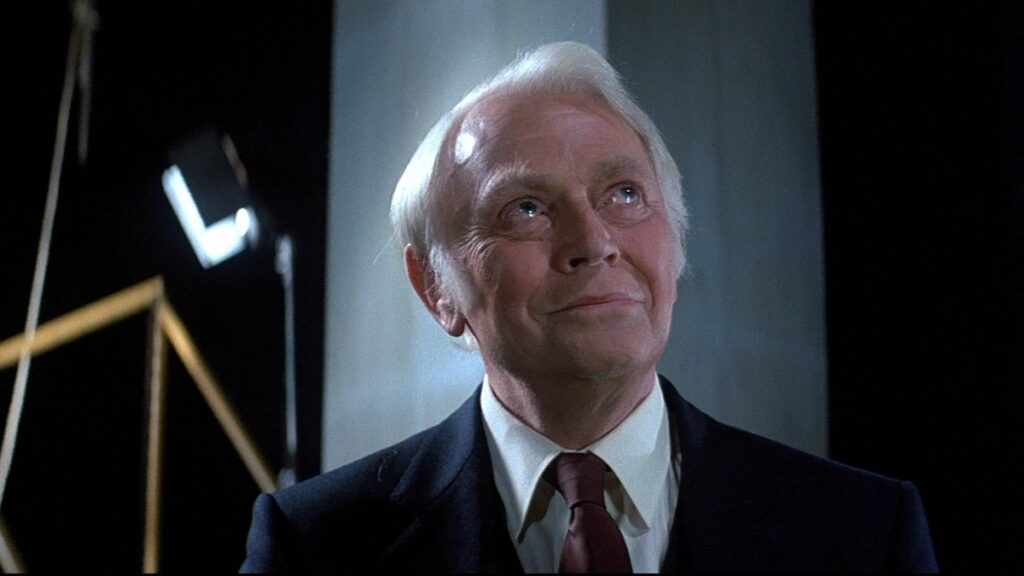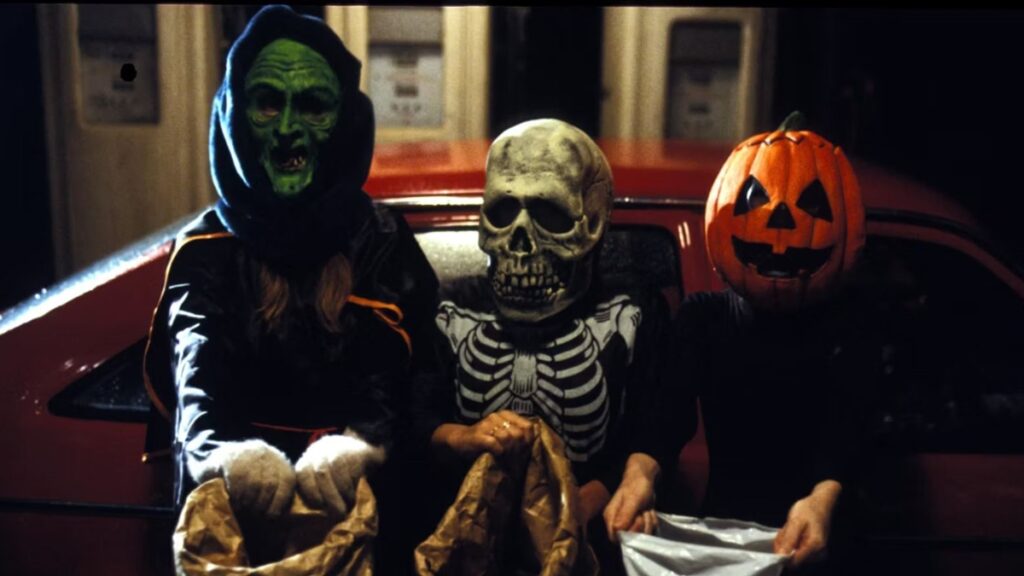Even in its weakest moments, it’s hard not to root for Season of the Witch’s unique take on what a Halloween movie can be.
The modern age of sequels, spin-offs, and all other franchise extensions has amplified complaints about how derivative follow-ups can be. As a result, sequels have garnered a bad reputation, and it’s not unearned.
Halloween III: Season of the Witch, then, would seem to be the perfect response to these kinds of complaints. It foregoes Laurie Strode and Michael Myers entirely, save for an in-story commercial for the original Halloween. Instead, Season of the Witch focuses on new characters and fresh ideas about the nature of evil. The variations between Halloween III and its predecessors show admirable creative gusto. Still, the shadow of The Shape’s greatest moments makes Season of the Witch’s flaws stand out all the clearer.

Season of the Witch takes place in Northern California and begins with an older man running for dear life, clutching a Silver Shamrock Halloween mask. He finds his way to the local hospital, where he encounters Dr. Dan Challis (Tom Atkins). The stranger’s repeated murmuring about impending disaster rouse Challis’ suspicions. The man’s subsequent murder in his hospital bed get those suspicions roaring.
The recently deceased’s daughter, Ellie Grimbridge (Stacey Nelkin), soon arrives, begging Challis for help tracking down information about her dad’s demise. Their search leads them to Silver Shamrock Novelties, whose owner, Conal Cochran (Dan O’Herlihy), has a sinister plan for the world involving their popular line of Halloween masks and the holiday night itself.
The differences between Halloween III and its predecessors are most immediately apparent in protagonist Dr. Dan Challis. Teenage slasher survivor Laurie Strode passes the baton to a man firmly in his 40s. Strode and her friends often fretted about matters that would only seem important to people stuck in high school. Meanwhile, Challis has a job and kids to juggle, stumbling with both. He’s a working-class Joe and a departure from the protagonists common not just in the previous Halloween movies but in mainstream horror films of the 1980s.
[T]he shadow of The Shape’s greatest moments makes Season of the Witch’s flaws stand out all the clearer.
The adversaries of Season of the Witch are also quite different from Michael Myers and his trusty knife. This vintage slasher movie villain was someone who wrung so much tension out of being mysterious. A mask concealed his face from the audience. He could just appear and disappear out of nowhere. Even his surprise resurrection at the end of the first Halloween was cloaked in uncertainty, the audience never seeing how he survived. One minute he’s on the ground. The next, he’s vanished. You cannot predict Michael Myers, just as you cannot get a good sense of his true appearance.
Writer/director Tommy Lee Wallace goes in the opposite direction with Season of the Witch’s villain. The primary antagonist, Conal Cochran, is a public figure in the company town he oversees. He’s the type to show up at a motel in the dead of night to offer false reassurances to the townsfolk. The same is true of his army of robotic, bloodthirsty henchmen. Even while killing, they wear no masks. The third act of Halloween III goes so far as to turn on Cochran taking Challis on a tour of his facility and laying out how his evil plan will work. Michael Myers was darkness in the shape of a man. On the other hand, these villains pursue an explicit purpose, a purpose they’ve developed an elaborate scheme to achieve.

Season of the Witch’s deaths are an evolution of a familiar element from the prior installments. While the initial Halloween left most of the grisly demises to the imagination, reshoots infamously impacted Halloween II, dramatically ramping up the presence of gore in the final product. This movie continues that escalation, employing science-fiction elements that introduce a new level of gruesome.
Cochran aims to melt kids’ faces with magical masks and unleash bugs, snakes, and other dangerous critters through their corpses. These stylized demises, which make great use of make-up work by a team of artists that included Tom Burman, are a far cry from the deaths seen in the first two Halloween movies. Even the most extreme deaths in Halloween II were still grounded in some kind of reality. Season of the Witch, meanwhile, gleefully throws verisimilitude to the wind.
Going in this heightened direction, particularly bringing in sci-fi elements, isn’t a bad way for Season of the Witch to offer something new to moviegoers. Unfortunately, being a Halloween film means that it unfolds in the shadow of a masterpiece. And comparing it to earlier entries in the saga is where cracks become apparent.
In an age of sequels drenched in fan service and rehashes of the past, it’s impossible not to admire Season of the Witch’s commitment to delivering unexpected tricks and treats to moviegoers.
Perhaps most fatally, the film could’ve taken some cues from the original Halloween and left more of its frights unexplained. While initial reviews for this movie, like one from Roger Ebert, complained that there was too little in the way of explanation for Cochran’s plan, I found myself yearning for the script to do a little less explaining. Cochran’s initial rationale for his wicked machinations (“I love a good practical joke”) would’ve sufficed. Lathering on an extra monologue about ancient Irish Samhain traditions detracts from his scariness. There’s a reason Myers doesn’t pause the climax of the first Halloween to deliver a soliloquy about his undying hatred for Laurie Strode!
Speaking of whom, Laurie is a much more compelling protagonist than Challis. Key elements of his personality– the strained relationship with his kids, the abrupt romance with Ellie Grimbridge–never go deep enough to gain audience investment. On the other hand, patterning him on a detective does achieve moments of suspense. Unfortunately, this often leaves Challis as merely a spectator to much more interesting characters.

Even if the movie never comes close to matching Halloween, it’s still a fun time on its own merits. The constant barrage of weirdo developments across its succinct 96-minute runtime ensures that it never leaves you bored to tears. It is interesting to see how the relentless bloodlust of Michael Myers translates into a rich guy and his goons. Season of the Witch functions as a sly commentary on how wealth renders people untouchable in a capitalist society. This lends some bite to its killings, which prove extra eerie thanks to how frequently Cochran’s automatons seemingly just materialize.
It cannot match the first Halloween, but Halloween III: Season of the Witch is still a solid piece of horror filmmaking. It’s especially noteworthy for how drastically it retools the norms for this franchise. Even the moments where the film comes up significantly short compared to its predecessors show a willingness by Tommy Lee Wallace and company to try something new. In an age of sequels drenched in fan service and rehashes of the past, it’s impossible not to admire Season of the Witch’s commitment to delivering unexpected tricks and treats to moviegoers.